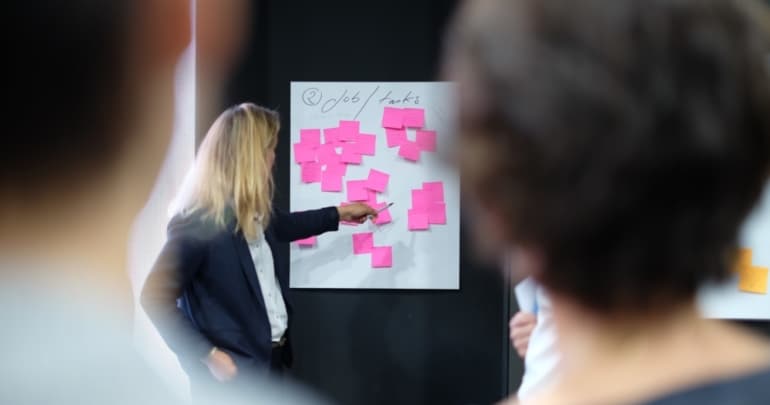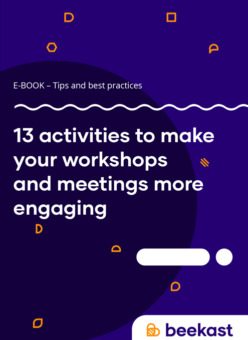Even if sprints aren’t part of your team’s normal routine, you’ll still want to read this article. It’s full of inspiration for how to set up activities or meetings at the end of each project.
If you’re a Scrum Master, product owner or agile coach and know all about the agile method, this will be a great refresher on some of the basics.
In any case, an agile retrospective meeting is an opportunity for the entire team to review progress and identify areas of improvement going forward.
What’s an agile retrospective?
In the agile scrum methodology, an agile retrospective is a meeting at the end of each sprint where the entire team gets together.
The goal of the retrospective is to start with the experience of each scrum team member and learn from their errors on the current project in order to identify all the things that can be improved during the next sprint and decide what actions to take.
During this discussion time, each person has to be able to express themselves. It’s an important step that’s essential for the team to function properly.
How to do an agile retrospective
Since each project and each team are different, there’s no single way of organising a retrospective.
Plus, the recurring nature of these meetings requires the organiser to come up with something new at the end of each sprint so things don’t get too repetitive.
Still, there are some general steps that each agile retrospective contains:
- an icebreaker to jump-start discussions
- an activity that gathers information from the team
- an activity to sort and rank information
- a time to outline the action plan as a team
- a closing to confirm that the initial goal has been met
Something else that’s the same for all agile teams: these retrospectives are usually quite lively and animated.
Simple examples of activities to use in agile retrospectives
Wondering what activity to use for your next iteration or want to try out an agile retrospective? Here are a few examples.
- Weather report

A weather report is the perfect way to start a retrospective: you can get a feel for your team’s mood and frame of mind before starting.
To break the ice, participants answer the question, “How have these last few months been for you?” on a whiteboard, drawing their “weather”: cloudy, sunny, rainy, stormy, etc.
- Speedboat
An agile speedboat workshop is a metaphor that pushes the team to make progress together towards a shared goal: successfully completing the project.
Through the image of a boat that is propelled forward by the wind but held back by rocks or anchors, team members identify the project’s strengths and determine what’s slowing it down, then work together to find solutions.
- Glad, Sad, Mad
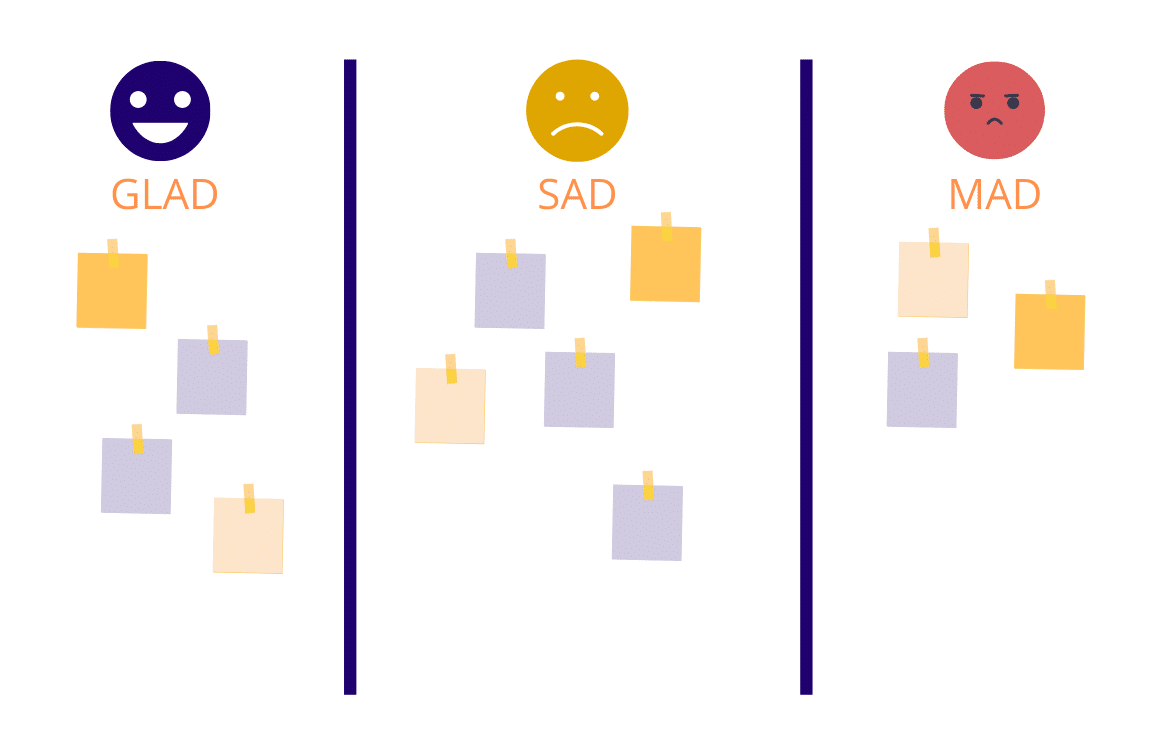
This workshop is probably the simplest to set up for a retrospective. The goal of Glad, Sad, Mad is to easily find improvement strategies as a team.
Team members put a sticky note listing what made them glad, sad or mad during the sprint in one of the three columns in the table. The group then votes on improvement strategies to use until the next retrospective.
- Keep, Start, Stop
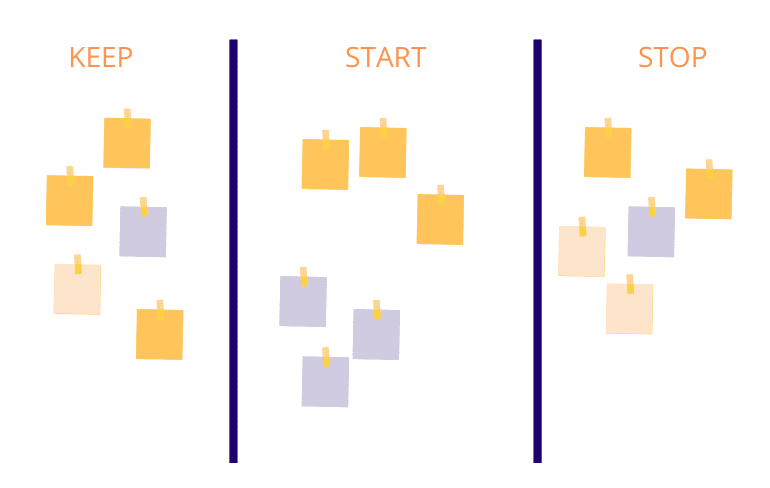
This is another very popular workshop for gathering feedback in organisations. It consists of highlighting what the team wants to keep in the next sprint, what they should start doing and what they want to stop.
In a three-column table, the facilitator invites people to suggest a new idea for each theme. For each idea, the team suggests an improvement strategy and then votes on the best ones that will be implemented in the next sprint.
- Starfish
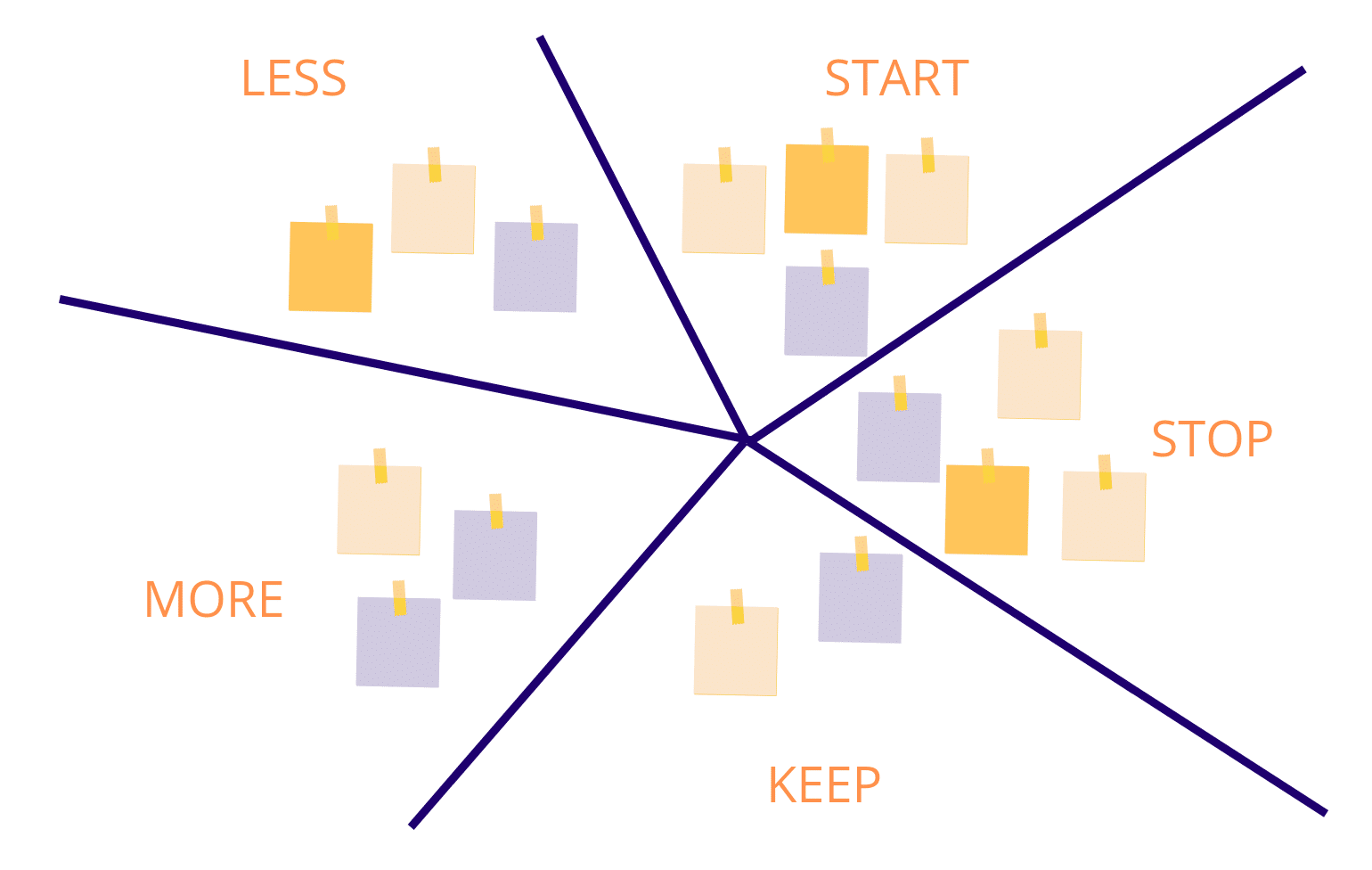
Here’s another very popular agile retrospective activity for very easily finding improvement strategies.
The Scrum Master draws five areas: more, less, start, stop, keep. Each team member is invited to add a new idea for each category:
- more: what’s going well on the team
- less: what’s not going well
- start: what the team should start doing
- stop: what they should stop doing
- keep: what they should keep doing
The team discusses the ideas and then votes for the improvement strategies to use in the next sprints.
- ROTI
As you’re finishing the retrospective, it’s important to wrap up well to make sure you’ve met the meeting goal at the end of the iteration.
An agile ROTI activity is very simple to set up successfully. On a scale of one to five, the team members rate whether the time spent in the retrospective was a good investment. One out of five means “I wasted my time”. Five out of five means “It was worth it”.
It’s up to the facilitator to do what’s necessary to improve the next agile retrospective.
Beekast: a tool for hosting your agile retrospectives
Beekast makes it easy to organise collaborative meetings in person or remotely.
There are many interactive activities you can use to host all the agile retrospectives you want in order to review with your team and gather feedback.
Use a Board, Metaphor or Matrix activity to get your team together at the end of a sprint.
Want to try out Beekast?
Want to learn more about agile retrospectives? Our Scrum Masters recommend the book Agile Retrospectives: Making Good Teams Great by Esther Derby and Diana Larsen.
